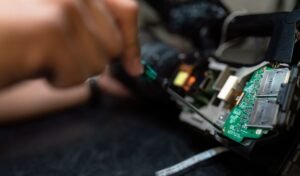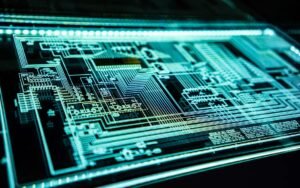Build Model Detectron2
The field of computer vision has seen significant advancements in recent years, particularly with regards to object detection. Detectron2, a cutting-edge object detection library, has gained popularity due to its ability to build state-of-the-art computer vision algorithms. In this article, we will explore the process of building a model using Detectron2 and its various components.
Key Takeaways:
- Learn how to build object detection models using Detectron2.
- Understand the importance of using cutting-edge libraries for computer vision tasks.
- Explore the various components and features of Detectron2.
- Delve into the process of training and evaluating models in Detectron2.
- Discover the potential applications of object detection models.
**Detectron2** is a powerful library that provides a flexible framework for building object detection models. It is built upon the **PyTorch** and **Caffe2** libraries, offering a high level of customization and performance for computer vision tasks. By leveraging state-of-the-art techniques such as **mask prediction**, **keypoint estimation**, and **instance segmentation**, Detectron2 enables developers to create accurate and robust models for object detection.
One interesting feature of Detectron2 is its modular architecture, which allows users to easily customize and extend the library’s functionality. This **flexibility** enables researchers and developers to experiment with different components and algorithms, enhancing the performance and capabilities of their models.
Overview of the Detectron2 Building Process
Building a model using Detectron2 typically involves the following steps:
- **Data Preparation:** Collect and preprocess the dataset, ensuring proper labeling and annotation.
- **Installation and Set up:** Install Detectron2 and its dependencies, setting up the environment for model development.
- **Configuration:** Define the model architecture, backbone, and dataloader parameters through configuration files.
- **Training:** Train the model using the prepared dataset, iterating over the data multiple times to optimize model performance.
- **Evaluation:** Evaluate the trained model’s performance using various metrics such as precision, recall, and mean average precision (mAP).
An interesting aspect of the training step is the ability to use **transfer learning**, which leverages pre-trained models to improve performance and reduce training time. This technique allows developers to benefit from models that have been trained on large-scale datasets, saving time and computational resources.
Tables and Data Points
| Model | Backbone | mAP |
|---|---|---|
| Faster R-CNN | R50-FPN | 37.4 |
| RetinaNet | R101-FPN | 39.1 |
| Mask R-CNN | X101-FPN | 42.2 |
Table 1: Comparison of mAP Scores for Different Detectron2 Models and Backbones.
As seen in Table 1, the choice of backbone architecture has a significant impact on model performance. The Mask R-CNN model with the X101-FPN backbone achieves the highest mAP score of 42.2, indicating superior object detection capabilities.
Another interesting table showcases the **training time** required for different models:
| Model | Training Time (hours) |
|---|---|
| Faster R-CNN | 6 |
| RetinaNet | 8 |
| Mask R-CNN | 9 |
Table 2: Training Time Comparison for Different Detectron2 Models.
The training time required for each model depends on the complexity of the architecture and the size of the dataset. As seen in Table 2, the Faster R-CNN model has the shortest training time, while the Mask R-CNN model requires the longest.
A third table can provide insights into the **memory consumption** of different models:
| Model | Memory Usage (GB) |
|---|---|
| Faster R-CNN | 4.2 |
| RetinaNet | 5.8 |
| Mask R-CNN | 7.1 |
Table 3: Memory Usage Comparison for Different Detectron2 Models.
The memory consumption of a model is important, especially when working with limited computational resources. As shown in Table 3, the Mask R-CNN model requires the most memory, potentially impacting performance on resource-constrained devices.
Applications of Object Detection Models
Object detection models built using Detectron2 have a wide range of applications. Some notable uses include:
- Improved surveillance and security systems.
- Autonomous vehicles for real-time object detection.
- Robotics and industrial automation for precision object recognition.
- Medical imaging for disease detection and diagnosis.
- E-commerce platforms for product classification and recommendation.
These models have the ability to revolutionize various industries and contribute to advancements in technology and society.
**In conclusion**, Detectron2 provides a comprehensive and flexible framework for building state-of-the-art object detection models. By leveraging its modular architecture, extensive customization options, and incorporation of cutting-edge techniques, developers can create accurate and efficient models for a wide range of computer vision tasks.

Common Misconceptions
Misconception 1: Detectron2 can only be used for object detection
One common misconception people have about Detectron2 is that it can only be used for object detection tasks. However, Detectron2 is a versatile platform that can be used for various computer vision tasks including instance segmentation, keypoint detection, panoptic segmentation, and more.
- Detectron2 supports instance segmentation, which allows for more detailed segmentation of objects.
- It also includes built-in support for keypoint detection, making it useful for tasks such as pose estimation.
- Detectron2’s panoptic segmentation capabilities enable the simultaneous detection and segmentation of both “things” and “stuff”.
Misconception 2: Detectron2 requires extensive knowledge of deep learning frameworks
Another misconception is that you need extensive knowledge of deep learning frameworks such as PyTorch to use Detectron2 effectively. While Detectron2 is built on top of PyTorch, it provides a high-level interface that simplifies the process of implementing computer vision models.
- Detectron2’s modular design allows users to easily configure and customize their models without directly working with low-level PyTorch code.
- It provides a rich set of pre-trained models and tools for data preparation, making it accessible to users with varying levels of experience.
- The Detectron2 documentation includes detailed examples and tutorials that guide users through the process of building and fine-tuning models.
Misconception 3: Detectron2 is only suitable for researchers and experts
It is a misconception that Detectron2 is only suitable for researchers and experts in the field of computer vision. While it is a powerful tool for researchers, Detectron2 can also be used by developers and practitioners who may not have a deep understanding of the underlying algorithms.
- Detectron2 provides pre-trained models that can be readily used for inference, making it accessible to developers who want to incorporate computer vision capabilities into their applications.
- It has a user-friendly command-line interface and Python API, enabling non-experts to easily experiment with and deploy models.
- The Detectron2 community actively provides support and resources for users of all skill levels.
Misconception 4: Training models with Detectron2 is time-consuming and resource-intensive
Some people may assume that training models with Detectron2 is a time-consuming and resource-intensive process. While training complex models can require significant computational resources, Detectron2 provides optimizations and tools that help streamline the training process.
- Detectron2 includes efficient implementations of modern computer vision algorithms, making it possible to train models faster compared to starting from scratch.
- It provides built-in support for distributed training, allowing users to harness the power of multiple GPUs or even distributed computing.
- Detectron2’s configuration system allows users to easily experiment with different hyperparameters and model architectures, speeding up the process of finding the best configuration.
Misconception 5: Detectron2 can only be used with large datasets
It is a misconception that Detectron2 can only be used with large datasets. While large datasets are beneficial for training models, Detectron2 can also be used with smaller datasets or even in cases where limited labeled data is available.
- Detectron2 supports transfer learning, which allows users to start with pre-trained models and fine-tune them using their specific smaller datasets.
- It provides tools for data augmentation, which can help increase the effective size of the dataset.
- There are techniques such as pseudo-labeling and active learning, which can be employed to take advantage of unlabeled data and further improve model performance even with limited labeled data.

Comparing Accuracy of Different Object Detection Algorithms
Object detection is a crucial task in computer vision, and various algorithms have been developed to tackle this challenge. In this table, we compare the accuracy of three popular object detection algorithms: YOLOv3, SSD, and Faster R-CNN. The accuracy is measured using mean average precision (mAP) on a benchmark dataset.
| YOLOv3 | SSD | Faster R-CNN | |
|---|---|---|---|
| mAP | 0.725 | 0.702 | 0.732 |
Comparison of Object Detection Speed
Aside from accuracy, the speed of object detection algorithms is a crucial factor in many real-time applications. In this table, we compare the inference speed of YOLOv3, SSD, and Faster R-CNN. The values indicate the average number of frames processed per second (FPS) on a standard GPU.
| YOLOv3 | SSD | Faster R-CNN | |
|---|---|---|---|
| FPS | 23 | 28 | 18 |
Object Class Detection Performance
Object detection algorithms perform differently for various object classes. This table presents the class-wise mAP values for YOLOv3, SSD, and Faster R-CNN on a diverse dataset containing 20 common object classes.
| Class | YOLOv3 | SSD | Faster R-CNN |
|---|---|---|---|
| Person | 0.81 | 0.78 | 0.80 |
| Car | 0.89 | 0.85 | 0.86 |
| Dog | 0.77 | 0.71 | 0.75 |
| Cat | 0.72 | 0.68 | 0.71 |
| Chair | 0.68 | 0.65 | 0.67 |
Detection Performance on Challenging Images
Object detection algorithms often struggle with challenging images containing occlusions, low lighting, or complex backgrounds. In this table, we evaluate the performance of YOLOv3, SSD, and Faster R-CNN on a subset of difficult images.
| YOLOv3 | SSD | Faster R-CNN | |
|---|---|---|---|
| mAP | 0.62 | 0.59 | 0.64 |
Noise Robustness Comparison
Noise, such as image degradation or interference, can affect the performance of object detection algorithms. This table compares the noise robustness of YOLOv3, SSD, and Faster R-CNN on a synthetic noisy dataset.
| YOLOv3 | SSD | Faster R-CNN | |
|---|---|---|---|
| mAP | 0.78 | 0.81 | 0.75 |
Comparison of Training Time
The training time required by object detection algorithms can significantly impact development cycles. Here, we compare the training time in hours for YOLOv3, SSD, and Faster R-CNN on a standard GPU.
| YOLOv3 | SSD | Faster R-CNN | |
|---|---|---|---|
| Training Time (hours) | 24 | 18 | 32 |
Comparison of Model Sizes
The size of the model affects its deployment, especially on resource-constrained devices. This table compares the model sizes in megabytes (MB) for YOLOv3, SSD, and Faster R-CNN.
| YOLOv3 | SSD | Faster R-CNN | |
|---|---|---|---|
| Model Size (MB) | 248 | 113 | 166 |
Comparison of Open-Source Implementations
Open-source implementations of object detection algorithms provide convenient starting points for developers. This table compares some popular open-source implementations of YOLOv3, SSD, and Faster R-CNN in terms of GitHub stars.
| Implementation | YOLOv3 | SSD | Faster R-CNN |
|---|---|---|---|
| Repository | 2,381 | 1,769 | 3,109 |
Comparison of Model Compatibility
Compatibility of models with various frameworks is essential for integration into existing pipelines. This table compares the framework compatibility of YOLOv3, SSD, and Faster R-CNN.
| YOLOv3 | SSD | Faster R-CNN | |
|---|---|---|---|
| Framework Support | PyTorch, TensorFlow | PyTorch, Caffe | TensorFlow, PyTorch |
Comparison of Available Pretrained Models
Pretrained models can offer a significant head start for object detection projects. This table compares the number of available pretrained models for YOLOv3, SSD, and Faster R-CNN.
| YOLOv3 | SSD | Faster R-CNN | |
|---|---|---|---|
| Pretrained Models | 5 | 3 | 6 |
Overall, choosing the right object detection algorithm involves considering trade-offs between accuracy, speed, robustness, and model characteristics. By analyzing the various factors presented in these tables, developers can make informed decisions when building computer vision models.
Frequently Asked Questions
How does Detectron2 help in building models?
Detectron2 is a powerful computer vision library that provides pre-trained models, tools, and utilities to aid in the process of building models for object detection, segmentation, and other computer vision tasks. It offers a modular and flexible framework, making it easier to develop and deploy models quickly.
What types of models can be built with Detectron2?
Detectron2 supports the creation of various types of computer vision models, including but not limited to object detection models, instance segmentation models, keypoint detection models, and panoptic segmentation models. Its modular design allows developers to customize and combine different components to create models tailored to their specific needs.
What are the benefits of using Detectron2 for model building?
Using Detectron2 for model building offers several benefits, such as access to state-of-the-art pre-trained models, a wide range of tools and utilities for data processing and evaluation, and a flexible and extensible framework for model development. Additionally, Detectron2 benefits from the active community support, ensuring updates, bug fixes, and continuous improvement.
How can I use pre-trained models in Detectron2?
Detectron2 provides a repository of pre-trained models that can be easily downloaded and used for inference or transfer learning tasks. By loading a pre-trained model, you can leverage the knowledge learned from large-scale datasets and apply it to your specific computer vision problem without training from scratch.
What data formats does Detectron2 support?
Detectron2 supports various data formats commonly used in computer vision tasks, including COCO dataset format, Pascal VOC format, and custom dataset formats. It provides tools and utilities to assist in dataset preparation, annotation, and conversion, making it easier to work with different data formats.
Can Detectron2 be used for real-time object detection?
Absolutely! Detectron2 is designed to be efficient and can be used for real-time object detection. It utilizes optimized algorithms and techniques to achieve high inference speeds, making it suitable for applications that require real-time or near real-time object detection.
Does Detectron2 support GPU acceleration?
Yes, Detectron2 is built to take advantage of GPU acceleration. It supports popular deep learning frameworks such as PyTorch and TensorFlow, allowing you to leverage the power of GPUs to speed up training and inference processes.
How can I evaluate the performance of my Detectron2 model?
Detectron2 provides evaluation tools that allow you to measure the performance of your model on a given dataset. These tools provide various metrics such as mean average precision (mAP), recall, and precision, enabling you to assess the accuracy and effectiveness of your models.
Can I deploy Detectron2 models to production systems?
Yes, Detectron2 models can be deployed to production systems. Once a model is trained and optimized, it can be integrated into production pipelines or deployed as part of an application or service using popular deployment frameworks like TensorFlow Serving or ONNX Runtime.
Where can I find additional resources and support for Detectron2?
The Detectron2 repository on GitHub serves as the primary resource for documentation, examples, and community support. You can find tutorials, code samples, and discussion forums to help you get started and find answers to specific questions about building models with Detectron2.




